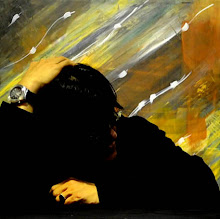 This is the second year of the UPA International Student Design Competition. Similar competitions have motivated and energized students to work on meaningful projects and led to initiatives that positively impacted lives of real people. Students who have participated in similar events went on to become active members of their professional communities.
This is the second year of the UPA International Student Design Competition. Similar competitions have motivated and energized students to work on meaningful projects and led to initiatives that positively impacted lives of real people. Students who have participated in similar events went on to become active members of their professional communities.
Important Dates
· 29 March, 2010 Paper Submissions Deadline 17:00 EST, Round 1 Closed
· 14 April, 2010 Notification of Round 1 winners
· 14 May, 2010 Submission by Round 1 winners of Posters for Judges to review before Poster session at the conference
· 25 May, 2010 Round 2, Poster session & judging at UPA in Munich, Germany
· 26 May, 2010 Round 3, Oral Presentations of winning projects from the Poster session in Round 2 & announcement of competition winners
The Design Challenge: Designing for a Sustainable World
We have become a wasteful society - not necessarily purposely but more out of ignorance and carelessness - the World Usability Day 2009 focused on this. It is important that the thought of sustainability find its way into many different areas in life and business, especially in the area of design.
Sustainable design is about “designing physical objects, the built environment and services to comply with the principles of economic, social, and ecological sustainability” [Wikipedia] in order to enhance the users’ awareness and to reduce the use of non-rewardable recourses.
Sustainable design is an attempt to remedy the current problems of excessive energy consumption and pollution in two basic ways:
· Designing the product allowing for a eco-friendly process, materials etc: Have the materials and processes that have been used been recycled and are they re-usable? Are they user and environmentally friendly? How can existing products be optimized to contribute to a sustainable world?
· Designing concepts and products that influence the behaviour of users, for example the labeling of products to raise awareness of consumers on the real energy use in order to influence their decisions of buying or using a product (such as labeling schemes for domestic appliances or indicators / systems that visulize users’ consumption)
This competition invites student teams to invent a system or create a concept that addresses this design problem. This could be any kind of product, system or service that has impact on our environment, energy, water, soil, and more. Most important is that the solutions follow a user centered design process supported by background research and, if possible, ethnographic research of the solution space. We encourage students to reach into their nearby communities and include target user groups beyond students themselves – for example, families with children, urban professionals, the elderly, etc.. Solutions should be focused on real locations and be sensitive to real users’ needs and cultures. A cross-cultural approach and solution, reflecting the focus of the UPA2010 conference theme, would be desirable but not obligatory.
To enter the competition, student teams may present either a concept (a clear, detailed design specification that can be taken to prototype), or a fully realized prototype. Either way, teams must clearly illustrate their design decisions and demonstrate the user centered design processes that have been followed. We strongly encourage consideration of:
· Previous work in this area and in adjacent design areas
· Ethnography and contextual research to ground the design decisions
· Evaluation of the designs with target users within iterative design framework The Competition Structure
The competition follows a three round process. Each round focuses on communicating the team's ideas through a different mode, as follows:
Round 1. Short Paper
Teams will submit a short paper (6 pages maximum) describing their design solution. Expert reviewers will evaluate submissions and a maximum of 10 teams will be selected to attend the UPA conference in Munich.
Round 2. Poster
Advancing teams will attend the conference to give a poster presentation outlining their design, and discuss their proposed solution with a panel of Student Design Competition Judges. The Judges will select 4 teams to participate in the competition’s final round.
Round 3. Oral Presentation:
The four (4) finalist groups will give an oral presentation on their design to the panel of Student Design Competition Judges and UPA conference attendees. Based on the criteria below, the competition judges will rank and select an overall winner of the competition.
Awards
Cash prizes: Total 2500 US$ divided among the 3 top teams:
· $1250 for the top team
· $750 for the runners up
· $500 for the third place
(cash prizes will be paid in prepaid Visa Cards).
Free Membership with the UPA for 1 year.
Letters of Commendation & Announcement at Closing Plenary and Conference Web site.
For further details:
http://www.usabilityprofessionals.org/conference/2010/students/





























C.jpg)
C.jpg)
C.jpg)
C.jpg)
C.jpg)





























































